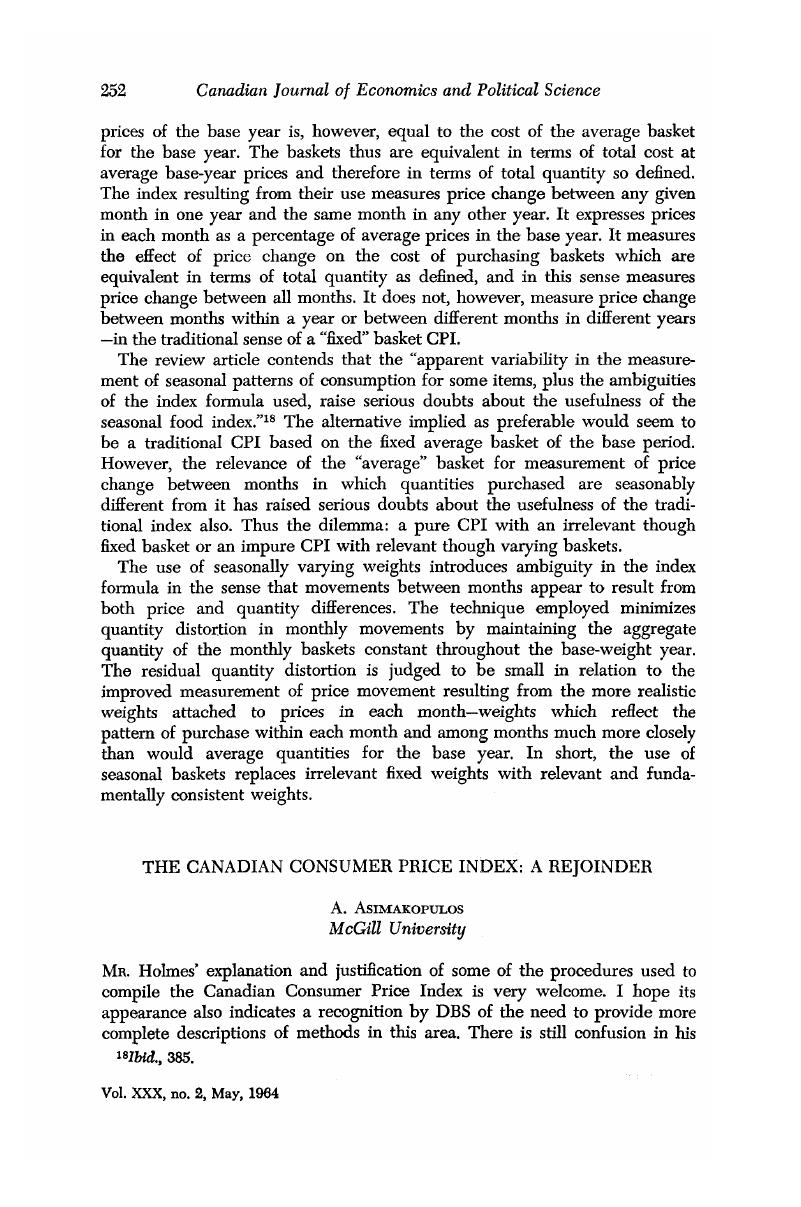No CrossRef data available.
Article contents
The Canadian Consumer Price Index: A Rejoinder
Published online by Cambridge University Press: 07 November 2014
Abstract

- Type
- Notes and Memoranda
- Information
- Canadian Journal of Economics and Political Science/Revue canadienne de economiques et science politique , Volume 30 , Issue 2 , May 1964 , pp. 252 - 255
- Copyright
- Copyright © Canadian Political Science Association 1964
References
1 US Congress, Joint Economic Committee, Government Price Statistics, Hearings, Pari 2, May 1961 (Washington, DC, 1961), 598.Google Scholar
2 The second reason Mr. Holmes gives for the exclusion of used-car prices, “Because of the difficulty of pricing used durables, their price movement is represented by that of new goods,” is acceptable only if the price movements of used cars can be adequately represented by new car prices, or at least if the inadequacies of such an indicator do not justify the added expense of pricing the used merchandise. In the United States the index makers have decided that the added expense of collecting used-car prices should be incurred.
3 The bias in the Canadian index, if this is what is being measured, is probably substantial. See US Congress, Joint Economic Committee, Government Price Statistics, Hearings, Part 1, January 24, 1961 Part 1, 51–6.Google Scholar
4 Zvi Griliches, “Hedonic Price Indexes for Automobiles: An Econometric Analysis of Quality Changes,” ibid., 173–196.
5 This limited effect was partly due to offsetting errors; the weight of the automobile component in the 1947–48 based index was much less than it should have been.
6 DBS 62-518, The Consumer Price Index for Canada (1949=100) (Revision Based on 1957 Expenditures) (Ottawa, 03, 1961), 14.Google Scholar


